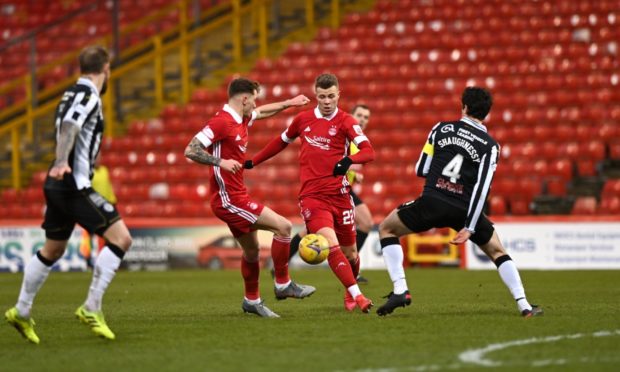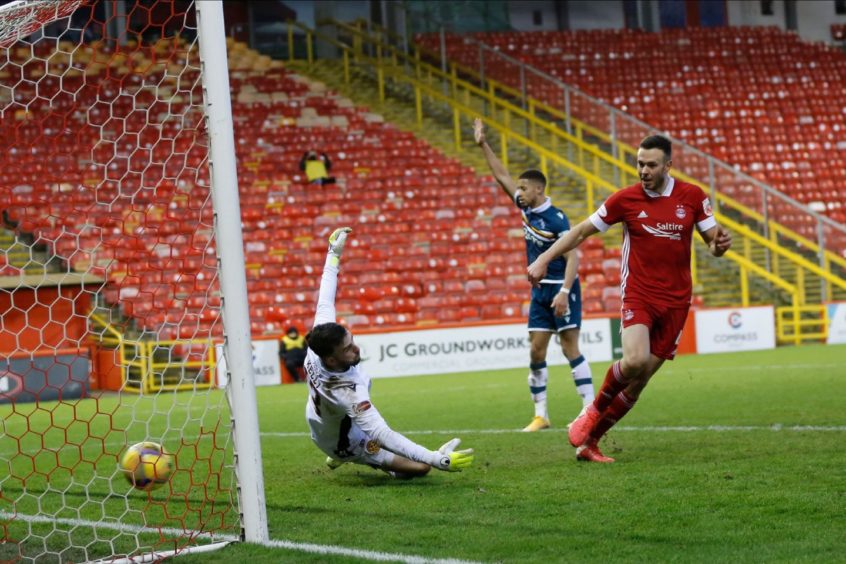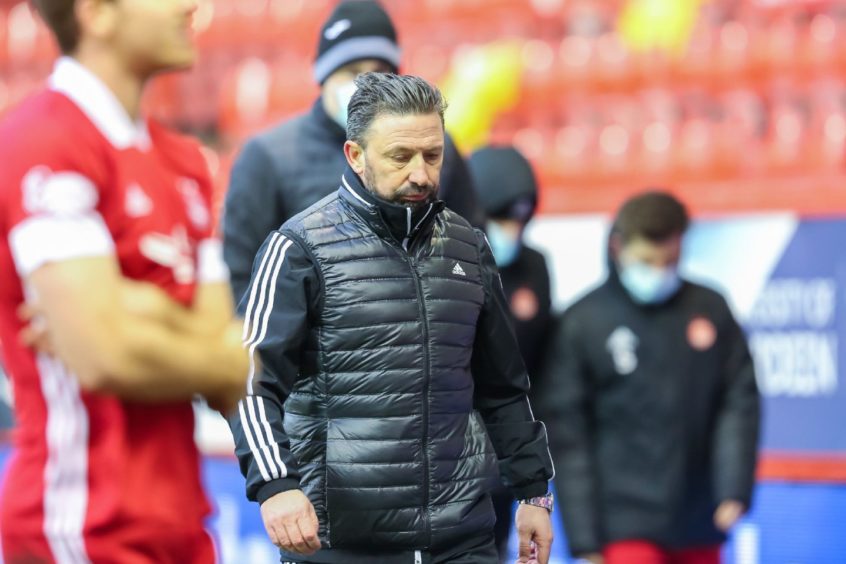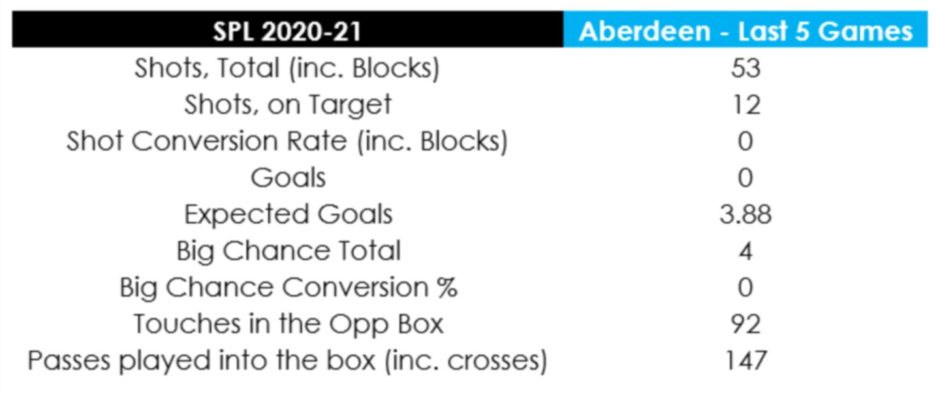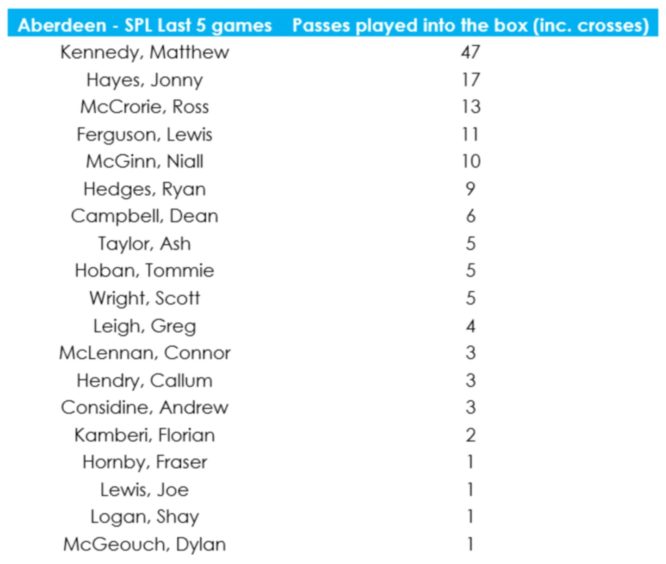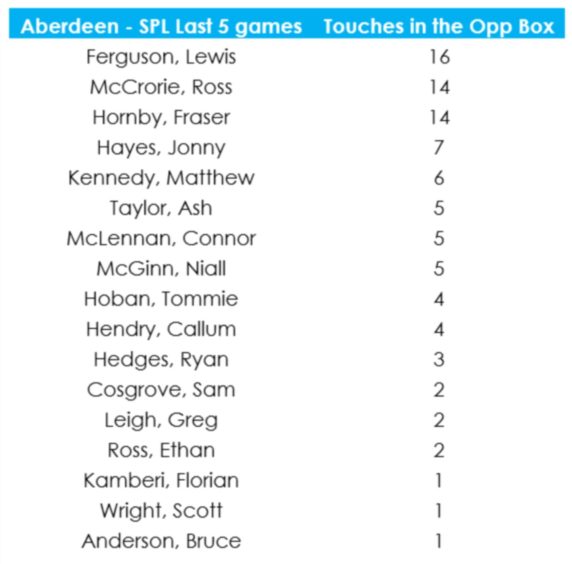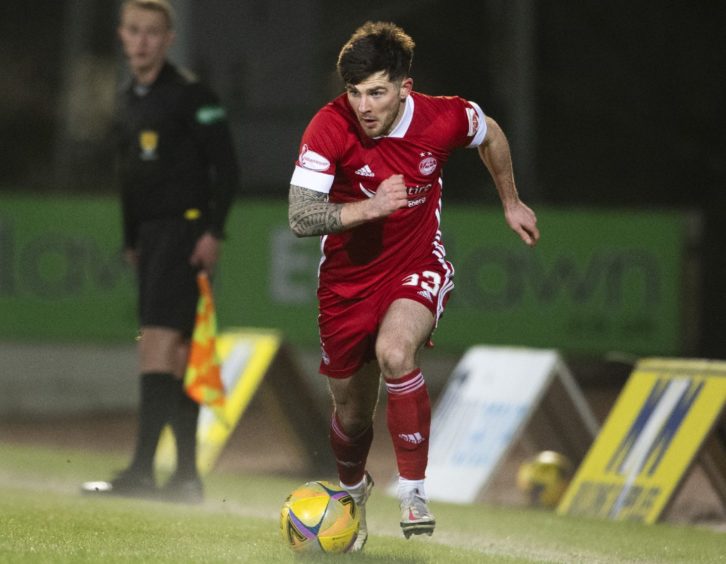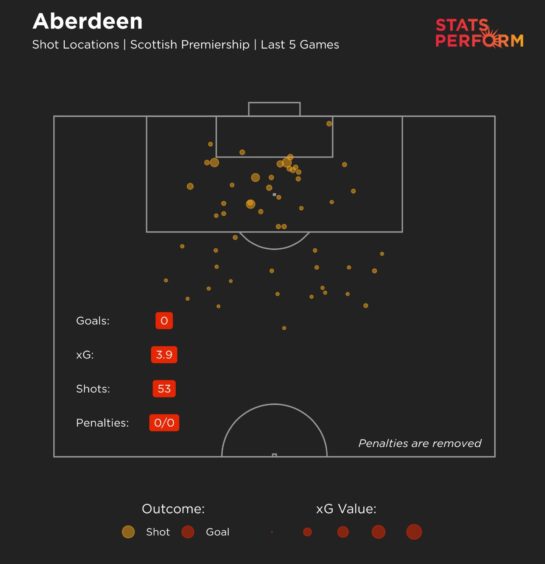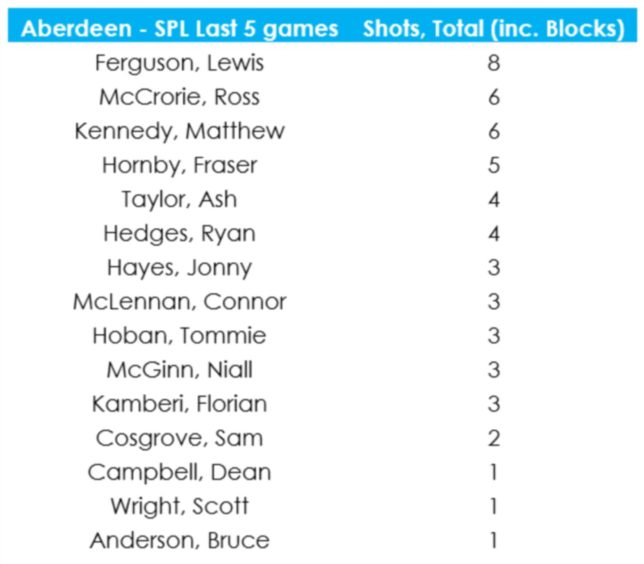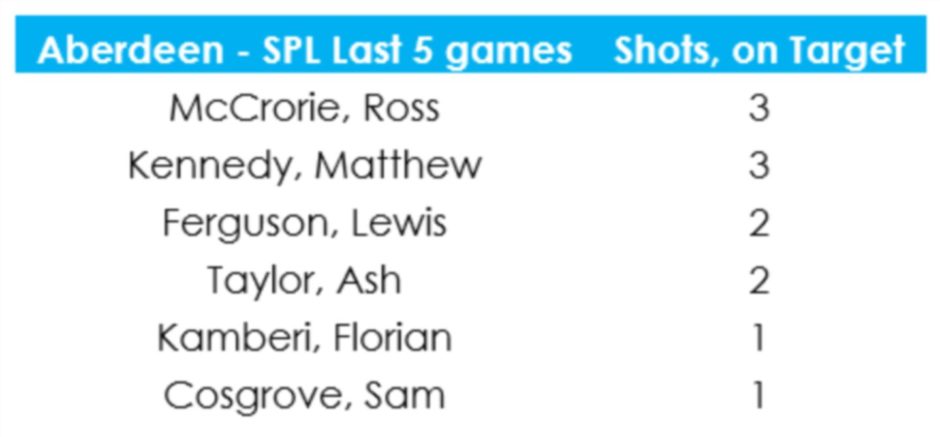Aberdeen’s struggles in front of goal going into tonight’s Premiership clash with Celtic are laid bare in the attacking stats from their previous five outings.
The Dons have failed to net in their last five league games, increasing the pressure on boss Derek McInnes:
Aberdeen 0 – St Mirren 0 (February 13)
Hibernian 2 – Aberdeen 0 (February 6)
Aberdeen 0 – Livingston 2 (February 2)
Livingston 0 – Aberdeen 0 (January 30)
St Johnstone 0 – Aberdeen 0 (January 23)
Not since centre-half Andy Considine’s 77th-minute finish in the 2-0 home victory over Motherwell have the Reds scored – 463 minutes ago.
That’s 72 minutes from the ignominy of breaking the all-time club record.
What’s going wrong?
Seven strikers – no goals
An Aberdeen striker hasn’t scored from open play since the now-departed Curtis Main’s double against Ross County at Pittodrie on December 12.
Owing to the Dons’ decision to completely revamp their forward line at the close of the January transfer window, the last five games are remarkable in that SEVEN players have failed to net when played upfront.
The released Main, Sam Cosgrove – who was sold to Birmingham for £2 million – and Bruce Anderson, who is now on loan (and scoring) at Hamilton, as well as deadline-day loan signings Fraser Hornby, Callum Hendry and Florian Kamberi, plus stand-in Connor McLennan, have all played as strikers at points over the last five games.
Opta’s expected goals (xG) and “big chance” metrics say the Dons should have really netted four goals over this period.
Here are the chances the Reds should have put away:
However, the Opta stats also paint a picture of a side who aren’t only struggling to put chances away. Chance creation is the big issue.
Four “big chances” in 463 minutes means Aberdeen are only creating a “big chance” – a situation where a player should reasonably be expected to score, usually in a one-on-one scenario or from very close range when the ball has a clear path to goal and there is low to moderate pressure on the shooter – once every 100 minutes or so.
You may have also noted there have been no “big chances” in the last three games.
Take a look at the numbers:
Why aren’t the chances coming?
From the lack of “big chances”, it’s safe to say there is something going wrong behind the striker/strikers.
The table above shows a lot of passes into the opposition box haven’t translated into Dons players actually getting the ball in the area, for example.
Here are the passes into the opposition box stats for the last five games, as well as the touches inside the opposition area:
The standout number on the above graphics is Matty Kennedy playing almost a third of Aberdeen’s passes into the opposition area.
Played as an attacker and wing-back this season, Kennedy is someone who has come in for criticism for his deliveries. Signed last January, the former St Johnstone man only has one assist in 19 starts this term.
Some have suggested his performances have been inhibited in several games where he has been playing on the right or left of a back-three (which Aberdeen abandoned on Saturday), because he is receiving the ball further back and, as a result, meeting more opposition and being forced to send crosses in from unfavourable positions.
Left-back Jonny Hayes, who returned from Celtic in the summer, having previously been Aberdeen’s star winger, has played what is perhaps a surprisingly low number of passes into the opposition area, given his history and that – like Kennedy – he has played in all five games.
The second graphic shows Aberdeen have been relatively successful at getting new frontman Fraser Hornby on the ball in the box in his three starts since joining on deadline day, although central midfielders Lewis Ferguson and Ross McCrorie have had more.
Hornby’s fellow loan striker Florian Kamberi managed one touch in the opposition box on his first start for the club – Saturday’s 0-0 bore draw with St Mirren.
But these touches in the box – more than 50 of them – aren’t resulting in chances.
Aberdeen are struggling to find the killer ball.
Hit and hope?
What has been a hallmark of the last five matches (and other points in the campaign) is Aberdeen’s lack of creative spark and ability to beat a man or play the killer pass which splits an opposition defence means the Reds are having to pull the trigger most often from less-than-ideal range.
This is something which obviously limits the likelihood of their shots resulting in goals.
33 of their 53 efforts in the last five games have been from further than 12 yards out, with more than 20 coming from outside the box.
Only 12 of those 53 shots were on target.
It’s clear from the graphics above and below most of Aberdeen’s shots are coming from their two central midfielders, as well as Kennedy.
While all three have had shots on target in the last five games, Hornby is yet to hit the target, despite having five efforts in his three starts. Kamberi, meanwhile, was on target from distance against the Buddies.
The seven players to play upfront over the last five matches have managed 14 shots between them (Main didn’t manage any, neither has Hendry), with just two on target.
It’s as clear a sign as any Aberdeen are struggling badly to break defences and get the ball to their strikers in dangerous areas, with the players further back instead being limited to a large amount of pot shots in the hope of pulling off something special.
With source of creativity Ryan Hedges out for the season and his early-season partner-in-crime Scott Wright sold, can McInnes and the likes of Kennedy, veteran Niall McGinn – who came back into the team against St Mirren – or Hayes find the formula to feed the Dons strikers with consistent chances?
They’ll get another chance at Parkhead this evening.
⚽️ Aberdeen's Q&A own goal amid miserable scoring drought
⚽️ Weather-affected Caley Thistle suffer double-injury hammer blowListen to this week's Northern Goal podcast🎙️ here:
Apple: https://t.co/Lf7aEKWOdy
Spotify: https://t.co/Q7ws7gAtj5 pic.twitter.com/A0EQAUL5na— EveningExpress Sport (@ee_sport) February 16, 2021
